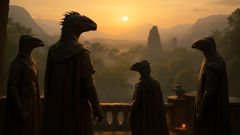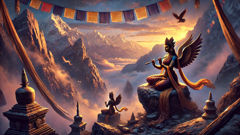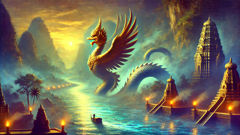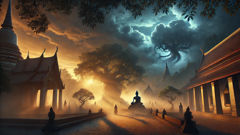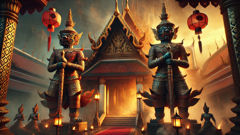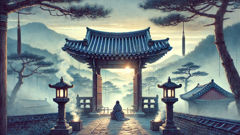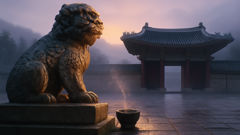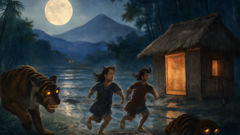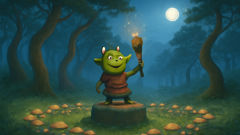Introduction
Long before the great migrations, long before the rise of the Zulu nation and the forging of mighty kingdoms, Southern Africa was a land of boundless secrets and hidden powers. In those shadowed epochs, when mist rolled endlessly across the highveld and ancient forests whispered with the songs of spirits, the land pulsed with stories that would echo down through centuries. Among these stories, few are as mysterious or as haunting as the legend of the Chitauri—the reptilian beings said to have once ruled over a vast empire stretching from the craggy Drakensberg to the fertile plains of the Limpopo. According to Zulu oral tradition, these were no ordinary creatures. The Chitauri, whose very name hints at stealth and enigma, were said to stride upright like men, their skin glimmering with scales that caught the moonlight in shifting hues of blue and green. Their eyes, it was whispered, shone with the wisdom of ages and the cold ambition of conquerors. They built grand cities of stone now lost to time, carved deep into the earth and crowned with towers that pierced the clouds. The Chitauri wielded powers the likes of which humans could scarcely imagine—commanding storms, speaking with the animals, and shaping the land itself. Yet, their empire was not only a realm of wonder but also of fear. Tales speak of their ability to cloak themselves from mortal sight, to whisper into dreams, and to sway the hearts of kings and chiefs. Over generations, these stories became more than myth; they became warnings, lessons, and veiled memories. Across the veld, elders still gather by firelight to recall the time when the Chitauri ruled, teaching the young that wisdom must be tempered by humility, and that even the mightiest can fall. This is the legend of the Chitauri—a saga woven from echoes, shadows, and the indomitable spirit of Africa itself.
Origins: The Coming of the Chitauri
Long before the first human footprints pressed into the soft soils of Southern Africa, the land lay slumbering under a sky thick with stars. Rivers carved their endless courses through emerald forests, and mountains stood sentinel over valleys draped in morning mist. It was in this primordial world that the Chitauri arrived—some say from the depths of the earth, others from a realm beyond the stars. Zulu storytellers describe the Chitauri’s coming as a time when the heavens split and thunder roared for days without cease. The earth shook, and creatures great and small fled into hiding. Then, as dawn broke over the jagged peaks, a procession appeared. Cloaked in shadow and shimmering scales, the Chitauri walked upright as men but moved with an inhuman grace. Their language was a sibilant melody that twisted in the wind and echoed through the rocks. The Chitauri brought with them knowledge beyond imagining—tools forged from metals unknown to humankind, stones that glowed with their own inner fire, and scrolls inscribed with the secrets of the stars. They built their first city where the river met the mountain, shaping stone with a touch and summoning water from parched earth. Under their rule, the wilderness blossomed. Animals flourished in numbers and size. Crops grew tall and lush. Rain fell at their command, and drought was banished. It was an era of plenty and peace, but also of awe and subtle dread. The Chitauri demanded loyalty and obedience, and their gaze brooked no disobedience. They appointed human chiefs—chosen for their cunning and ambition—to serve as intermediaries between themselves and the mortal world. These chiefs were granted gifts: heightened senses, wisdom in judgment, and the ability to heal with a word or gesture. Yet, the cost of such gifts was loyalty unto death, and any betrayal was met with swift, silent retribution. Over time, the Chitauri’s rule grew more intricate. They established laws and rituals, blending their customs with those of the early human clans. Children born under their reign heard lullabies sung in two tongues—one human, one serpentine. The great city at the river’s mouth became a center of learning, its halls filled with scrolls, crystals, and ancient relics. But as the Chitauri’s empire flourished, so too did the seeds of unrest. Human chiefs grew resentful of their subservience, longing for true power over their own people. Whispers of rebellion wound through the tall grass, passing from campfire to campfire like a contagion. The Chitauri sensed this change—a tremor beneath the calm surface of their rule. They responded with both generosity and terror: bestowing new gifts while making examples of those who defied them. The balance between harmony and oppression teetered precariously, even as the land thrived under the Chitauri’s guiding hand. It was a time of wonders and quiet fears, when every shadow might conceal a scaled guardian and every dream might bear the echo of a serpent’s song.
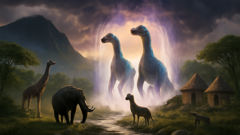
The Golden Age: Wonders and Shadows
The era that followed the Chitauri’s ascendancy came to be known as the Golden Age—a time when the land itself seemed to sing with vitality. Cities grew along the riverbanks, their architecture both alien and beautiful: towering monoliths etched with cryptic symbols, bridges of stone spanning canyons, and gardens where flowers from distant realms bloomed beside local acacias. The Chitauri moved among their subjects not as distant overlords, but as enigmatic mentors. They taught humans to craft tools sharper than bone or flint, to read the stories of the stars, and to harness fire without fear. Rituals were held beneath the moon, where elders and children alike watched as Chitauri sages called lightning from cloudless skies or shaped figures from living stone. At first, gratitude and reverence filled every hut and hearth. The Chitauri bestowed knowledge freely, and their human allies—now called the Chosen—were celebrated as sages and healers. Disease and hunger, once constant shadows, seemed to fade into memory. Trade flourished, linking distant villages through winding paths and stone-paved roads. Musicians composed songs in honor of the Chitauri, their harmonies weaving together the voices of man and serpent. Yet, beneath this harmony, tension simmered. Some among the Chosen grew proud and greedy, using their gifts to manipulate rather than uplift. The Chitauri, ever watchful, responded with subtle but unmistakable warnings: a field of crops turned to ash overnight, a river that ran red for a single morning, an entire council of elders struck silent by a glance. Fear began to mingle with awe. Legends from this era speak of forbidden chambers deep beneath the Chitauri cities—vaults holding relics of immense power, guarded by serpents whose eyes glowed with unnatural fire. Only the most trusted or desperate dared approach these sanctums, and few returned unchanged. Among the common folk, stories spread that the Chitauri could shift shapes at will, slipping unnoticed through marketplaces and gatherings. Children were warned not to wander after dusk, lest they fall under the sway of a hidden Chitauri’s whisper. Even as they dispensed wisdom and gifts, the Chitauri were careful to maintain an aura of mystery and dread. Their greatest teaching was that knowledge must never be separated from respect—or from fear of its consequences. As generations passed, humans began to change. Some learned to hide their thoughts and dreams, even from themselves. Others turned to secret rebellion, seeking ways to reclaim their autonomy. A few, inspired by the Chitauri’s example, sought to bridge the gap between mortal and serpent—searching for harmony that was not enforced, but freely chosen. These visionaries—healers, dreamers, and storytellers—became the seeds of a new hope, even as darkness crept ever closer to the heart of the empire.
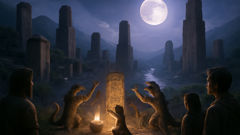
Rebellion and the Fall: The Breaking of the Serpent Empire
Change, once set in motion, is as relentless as the tides. The first true challenge to the Chitauri’s rule did not come from a mighty warlord or an external invader, but from within—the hearts and minds of those they had uplifted. Among the Chosen, there arose a chief named Tando, a man as cunning as he was compassionate. Tando was beloved for his wisdom but known for his restless spirit. He questioned the cost of the gifts granted by the Chitauri and wondered if humans could ever thrive without their scaled overseers. His doubts, once private, grew into quiet dissent, then open defiance. Tando’s followers gathered in hidden groves, learning to mask their thoughts from the Chitauri’s watchful eyes. They studied the old ways—songs and stories handed down before the serpent kings came. Guided by dream-visions, Tando discovered a place of great power: a cave hidden beneath the roots of an ancient baobab, said to be the navel of the earth. There, he found a crystal that pulsed with a light both cold and inviting—a relic lost by the Chitauri in ages past. With this artifact, Tando gained insight into the nature of the Chitauri’s power: it was not only knowledge, but connection—a web binding them to the land, its people, and even its spirits. If that web could be severed or remade, so too could the Chitauri’s grip be broken. What followed was a period of covert struggle. Tando’s rebels used cunning rather than force—sabotaging rituals, corrupting gifts, and spreading stories that undermined the Chitauri’s mystique. The empire began to unravel at its edges: crops failed in places, river spirits withdrew their blessings, and disputes flared between once-peaceful clans. The Chitauri responded with increasing harshness, but for every rebel they unmasked, two more rose in their place. The final confrontation came not on a battlefield, but in a gathering of chiefs beneath a blood-red moon. Tando, armed with the crystal and the support of his allies, faced the Chitauri council in a contest of will and wisdom. He challenged them to relinquish their power and let humans govern themselves—or risk losing everything. The air crackled with unseen forces as words became weapons, memories became shields, and ancient pacts were invoked. In the end, it was not hatred or violence that decided the outcome, but a choice: the Chitauri, seeing the resolve and unity of their former subjects, understood that their era had passed. One by one, they relinquished their gifts, dissolving the bonds that held them to the land. Their cities faded into ruin almost overnight, reclaimed by forest and earth. The last of the Chitauri vanished into legend—some say returning to the stars, others retreating deep beneath the mountains. In their place, humans emerged, forever changed by what they had learned and endured.
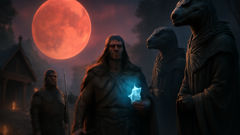
Conclusion
The legend of the Chitauri endures not because of its terrors or marvels, but because it speaks to the heart of transformation—the power of wisdom earned, rather than given. In Southern Africa, the stones that once formed Chitauri cities now lie hidden beneath tangled roots and silent grasslands. Elders say that if you listen closely at dawn, you might hear the echoes of serpentine songs carried on the wind. The gifts left behind by the Chitauri did not vanish; they became part of the land and its people—a legacy of resilience, curiosity, and unity in the face of unknown powers. Today, storytellers invoke the Chitauri not as monsters to be feared or gods to be worshipped, but as a reminder that every age must find its own balance between knowledge and humility. The fall of the serpent empire is a warning and a hope: that true wisdom is born from struggle, and that the mightiest rulers—no matter how strange or powerful—are ultimately accountable to those they would rule. In fireside gatherings from Zululand to the Limpopo’s banks, children still ask: do the Chitauri sleep in hidden caves? Will they ever return? The answers shift like mist, for the true legacy of the Chitauri is not their return, but the questions they leave behind—and the courage to seek answers in the world they helped to shape.

